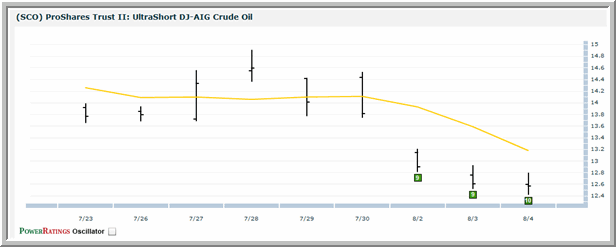Ultimate PowerRatings: Trading Strategies for PowerRatings Portfolios
What does it mean to trade with a PowerRatings Portfolio?
One of the most effective ways to trade using Ultimate PowerRatings is to trade using a portfolio strategy. This approach can help traders maximize the possibility of finding and buying the best pullbacks in the market every day, as well as using the power of diversification to spread risk among a number of different markets and trading strategies.
How can a short term trader set up a PowerRatings Portfolio?
At root, a PowerRatings Portfolio is a portfolio that is divided into 10 or more tranches, with each tranche representing a slot for an individual stock or exchange-traded fund (ETF).
For sake of this example, let’s use a 10-tranche portfolio.
A PowerRatings Portfolio with 10-tranches will never have more than 10 stocks or ETFs in the portfolio. In practice, it is also very unlikely that the Portfolio will often be fully invested, with positions in all 10 tranches.
What goes into the portfolio is up to the individual trader. Traders can create purely stock PowerRatings Portfolios, or combinations that include stocks and exchange-traded funds (ETFs). Traders can also create portfolios that are long-only or a mix of long and short positions (i.e., 60% top-rated stocks and funds, 40% 1-rated stocks and ETFs).
Conservative? Then consider building a PowerRatings portfolio based around only the biggest historical edges. This may mean restricting your trading only to those stocks and ETFs that have earned PowerRatings of 10 on the buy side and 1 on the short side. A somewhat less conservative strategy may allow for trading of 9-rated stocks and ETFs, as well.

Going into trading on Thursday, a conservative PowerRatings portfolio might have looked to buy top-rated ^GRNB^ on intraday weakness, while owning a top-rated ETF like the ^SCO^ (above) which earned a Leveraged ETF PowerRating of 10 on Wednesday’s close.
All of the PowerRatings trading strategies that work for traders when trading individual stocks and ETFs apply to PowerRatings portfolio trading. This means that buying stocks on intraday weakness, for example, is a practice that PowerRatings traders should continue to do when trading PowerRatings stocks in a portfolio strategy.
Need a refresher course on trading stocks on intraday weakness? Click here to read “Intraday Weakness and Scaling-In: Two Greatest Secrets of High Probability Trading, Part 1.”
Trading in a portfolio strategy is the way that professional traders have managed their trading capital for decades. While many individual traders tend to take a “one-stock, one-shot” approach to short-term trading, the benefits of trading a portfolio of stocks – as opposed to a single or handful of stocks at a time – can be significant.
Lower potential risk through diversification and trading multiple positions. Trade multiple strategies by including top- and low-rated stocks and ETFs – including leveraged ETFs – in the same portfolio. And take advantage of the same trading strategies that professionals have relied on and continue to rely on every day.
Find out more about what Ultimate PowerRatings can do for you and your trading. Quantified ratings for stocks, ETFs and leveraged ETFs – all in one place. Click here to launch your free, 7-day trial to our Ultimate PowerRatings today.
David Penn is Editor in Chief at TradingMarkets.com.
